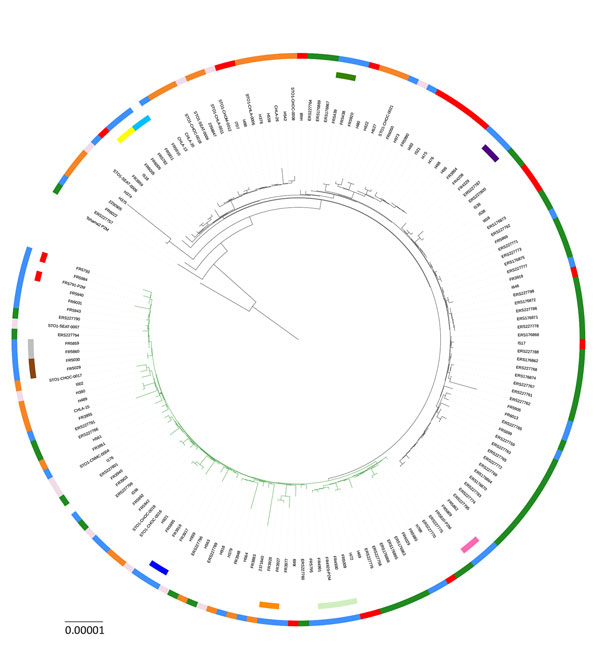Volume 24, Number 6—June 2018
Research
Genomic Sequencing of Bordetella pertussis for Epidemiology and Global Surveillance of Whooping Cough
Figure 2

Figure 2. Maximum-likelihood phylogenetic tree for Bordetella pertussis based on the concatenated alignments of the 2,038 cgMLST loci sequences of isolates from France (this study) and isolates from outbreaks in the United States and the United Kingdom. The tree was rooted on the Tohama reference isolate (GenBank accession no. NC_002929). Black tree branches indicate fim3-1 clade and green tree branches indicate fim3-2 clade. Intrafamilial groups of isolates and multiple groups of isolates recovered from the same patient are represented by sectors of the internal circle surrounding the tree (corresponding to colors in column 1 of Figure 1). The external circle indicates the geographic origin of isolates (blue, France; red, Vermont, USA; orange, California, USA; light pink, other United States; green, United Kingdom). Scale bar indicates nucleotide substitutions per site.